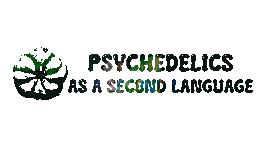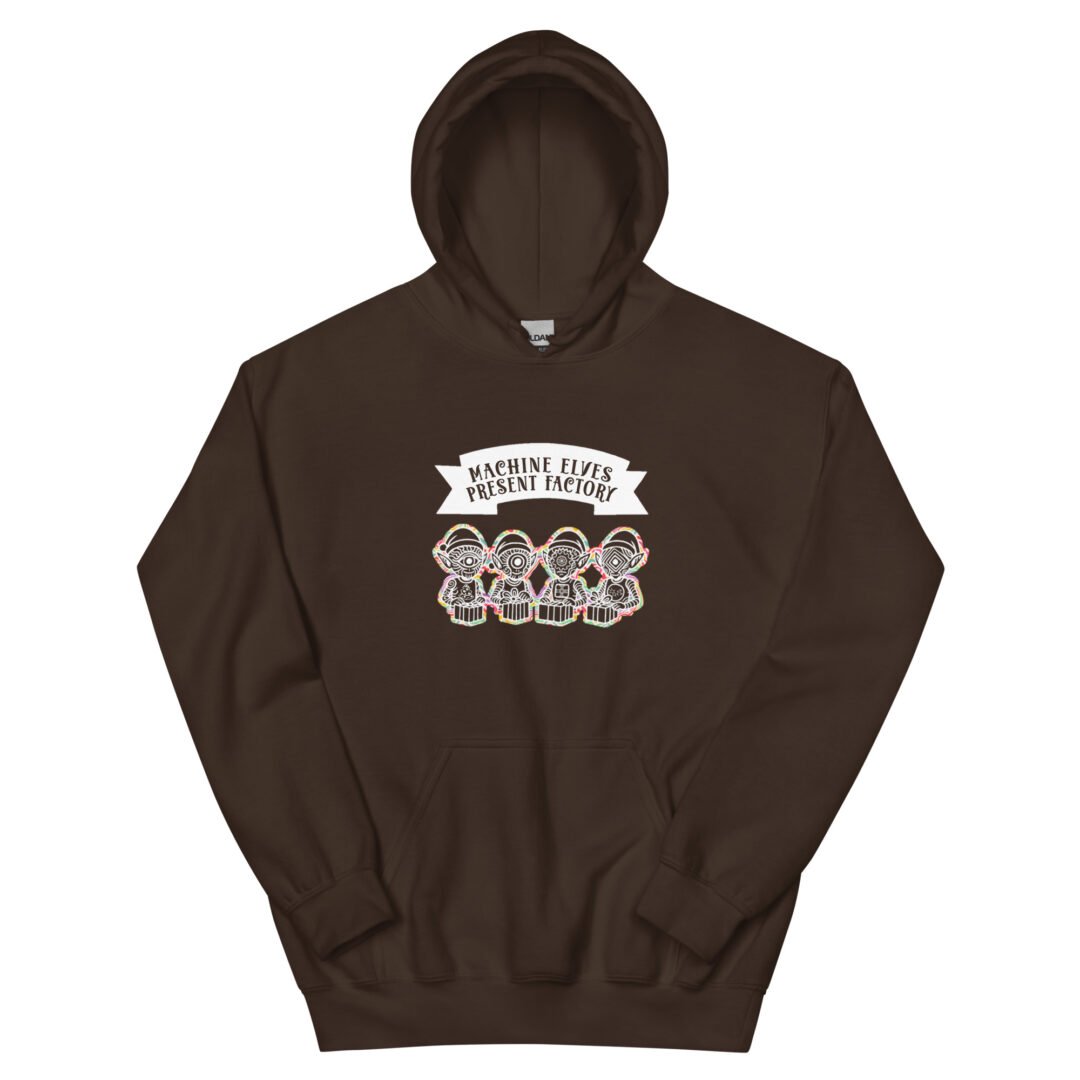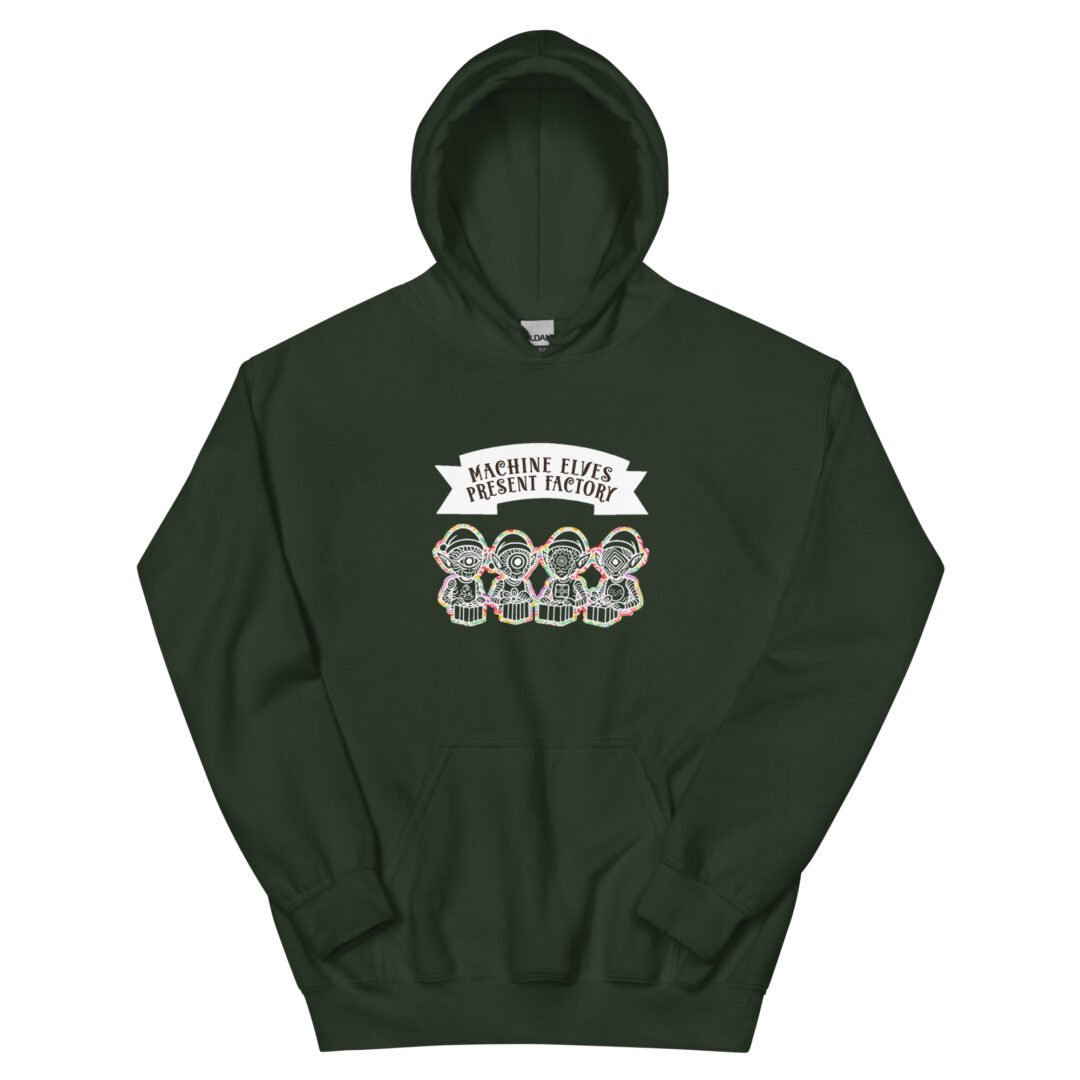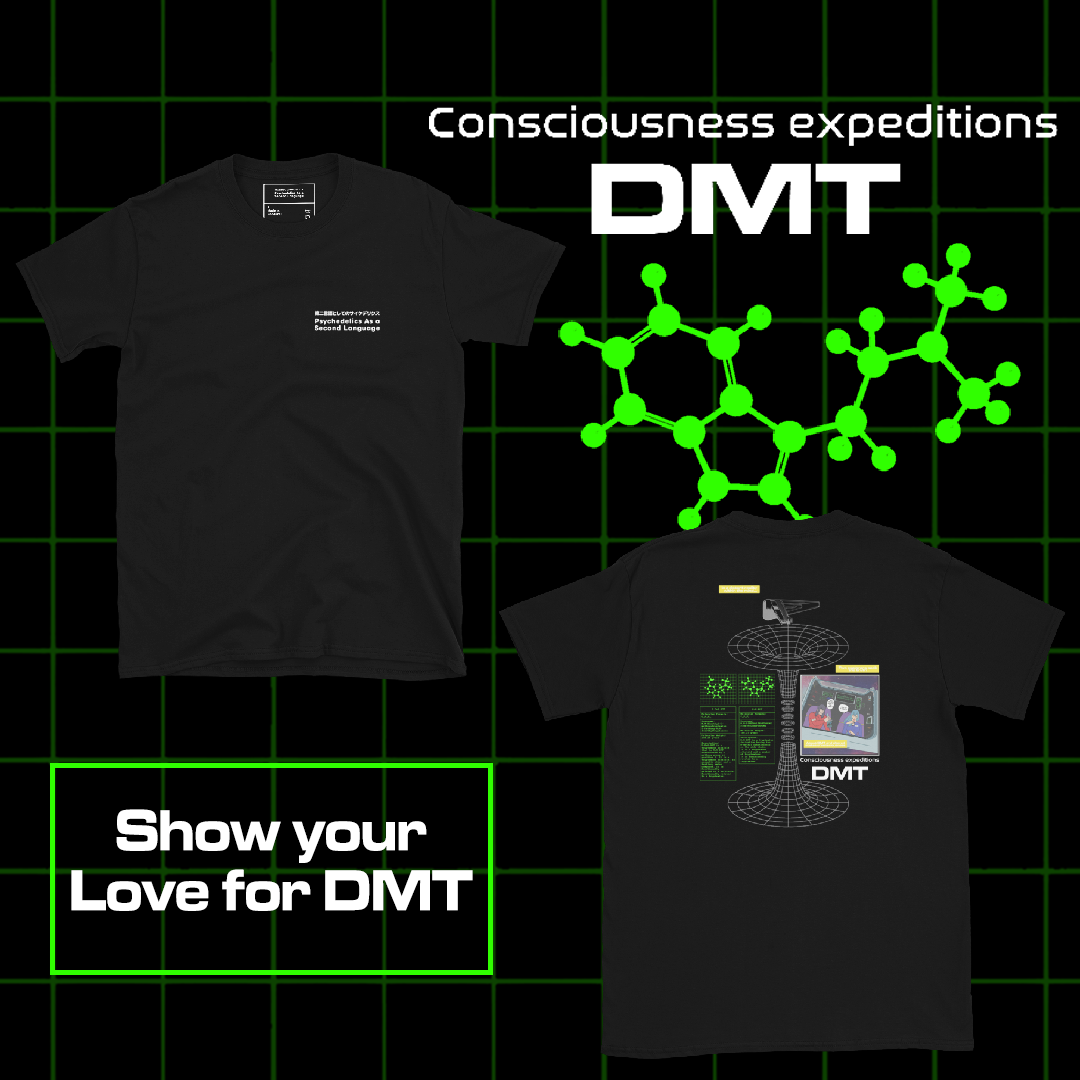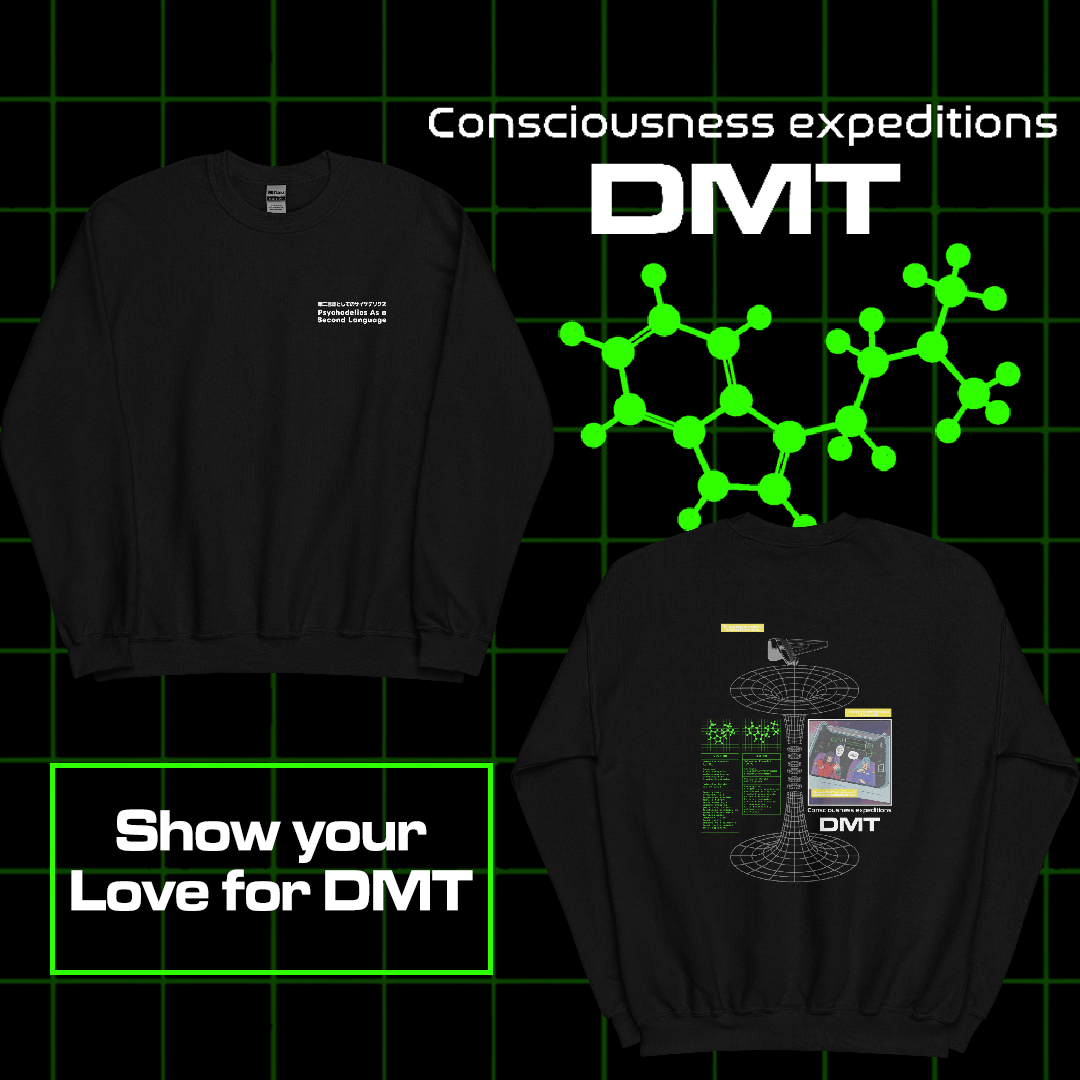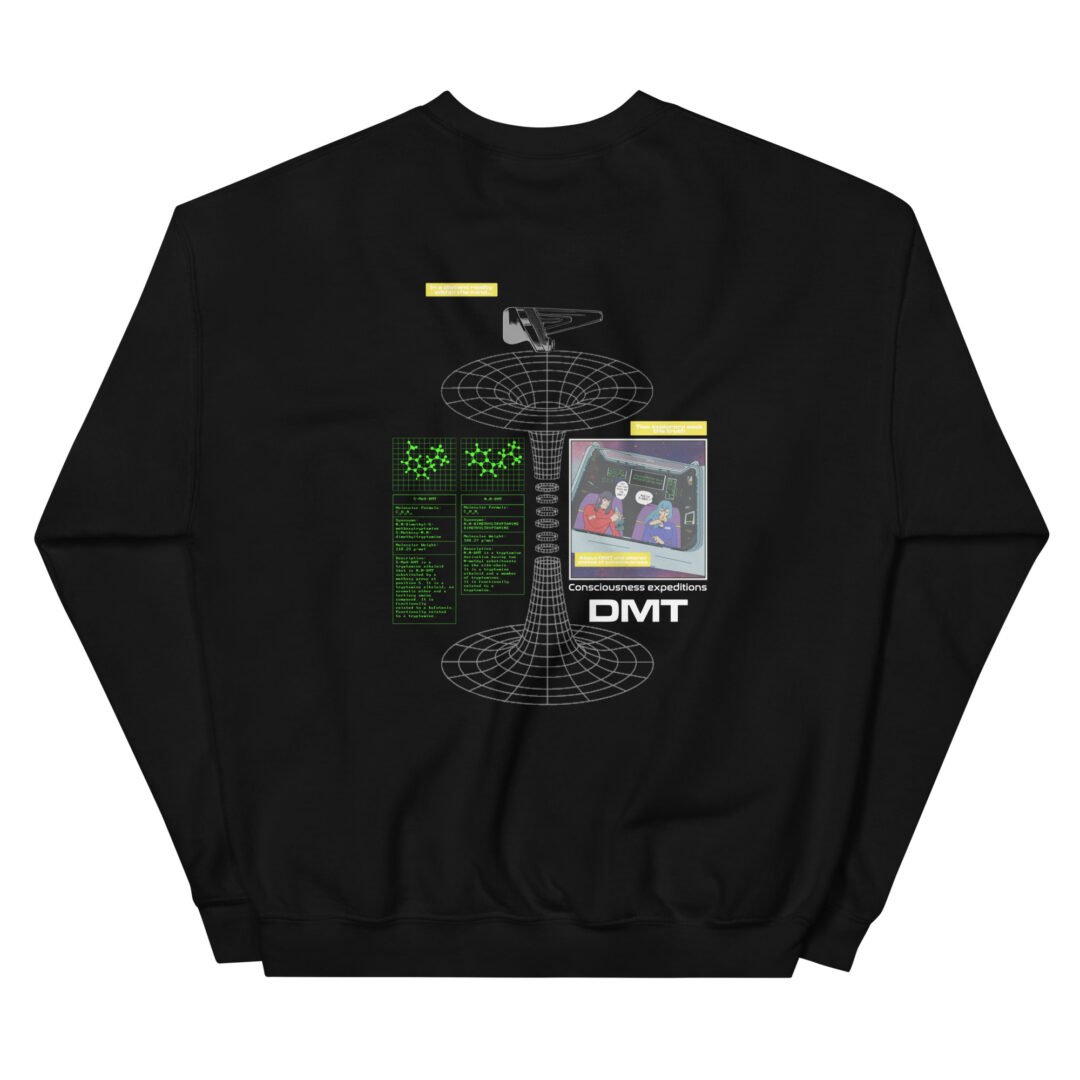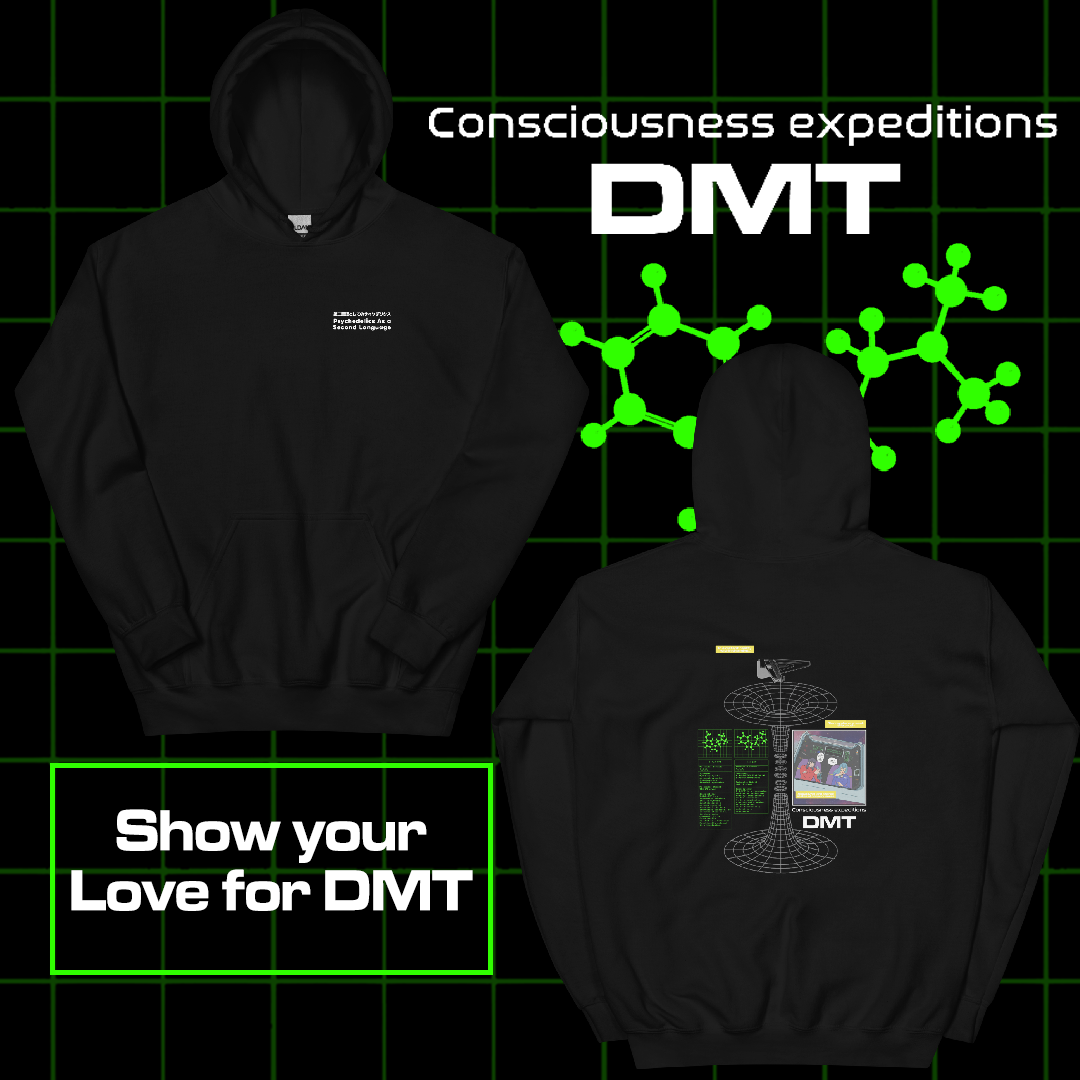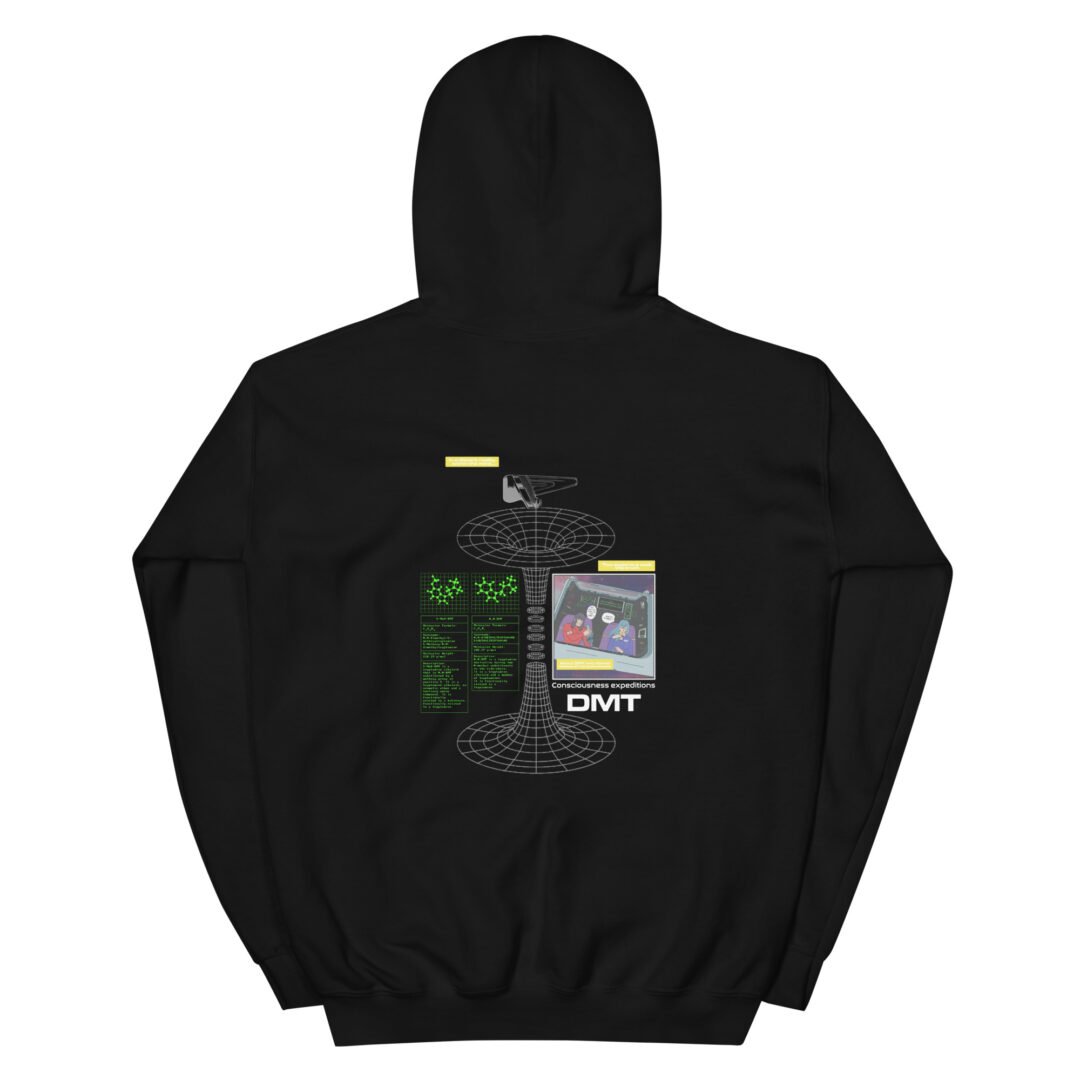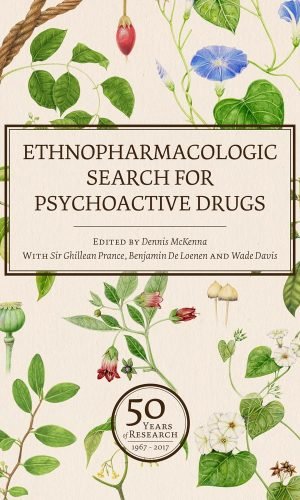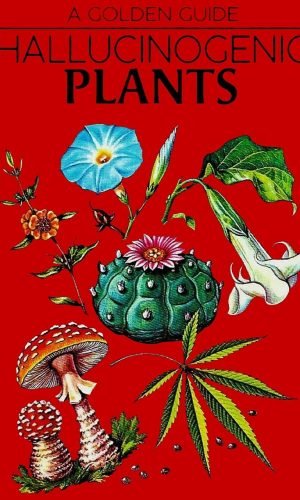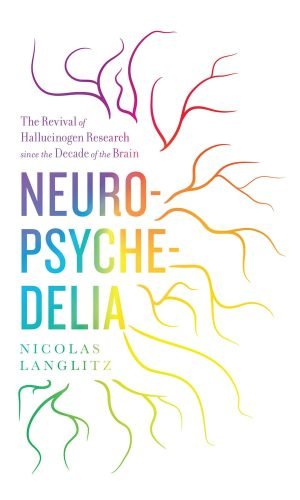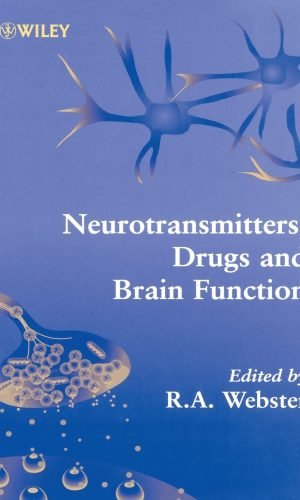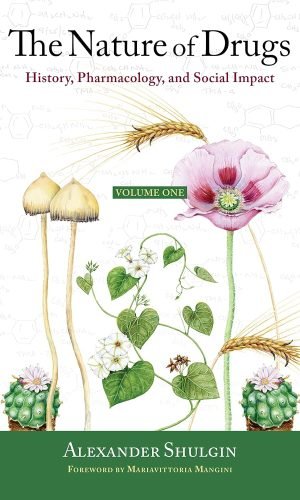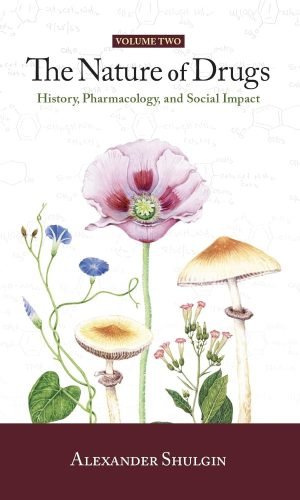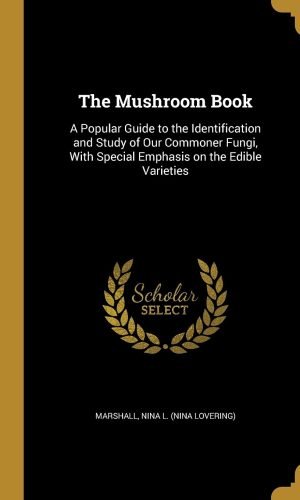Our field guide to enter the Psychedelic Space
Knowledge brings more questions than answers. Only by questioning everything can one master their craft. – GV
If you’ve just started entering the psychedelic world, you’re probably totally lost about where to start, you will likely have friends telling you to visit Erowid, but you’re thinking, what the fuck is Erowid? Is it a Psychedelic Hogwarts University where you get a letter handed to you by a magic creature once you do your first psychedelic or an exclusive psychedelic library where you have to say a secret password to gain access?
Perhaps your friends have entered and loved the psychedelic era this past couple of years and indicated you to watch Hamilton’s Pharmacopeia, but watching it makes you confused by its complexity as you have no idea what a phenethylamine is, what an acid-to-base reaction is, or even what are the squiggly lines that appear from time to time on a diagram. (Ps. I can guarantee they are not some encrypted message you are missing.)
I was in the exact same place as you around 2016. Even if I’ve been surrounded by psychedelic substances my whole life (you can read more about it here), this statement alone can already be confusing, but knowing about psychedelics is far different than learning about psychedelics.
Check out our Bicycle Day collection, 25% off until April 19th, using the code lsd at checkout
- Quick View
- Select options This product has multiple variants. The options may be chosen on the product page
- Quick View
- Select options This product has multiple variants. The options may be chosen on the product page
- Quick View
- Select options This product has multiple variants. The options may be chosen on the product page
- Quick View
- Select options This product has multiple variants. The options may be chosen on the product page
- Quick View
- Select options This product has multiple variants. The options may be chosen on the product page
During my journey of a decade, I’ve met a lot of people who knew about psychedelics, but only a smaller group of people dedicated their lives to educating themselves about these compounds.
When starting your journey, it’s hard to distinguish between the two as every piece of knowledge may seem like a golden nugget. (I assume nowadays it is even more confusing to differentiate the two with the rise of AI tools such as ChatGPT.)
For this reason, we decided to present you with our field guide to let you know what you should do if you are trying to integrate into the psychedelic space.
To firstly become educated about these compounds, the first tip would be to go right to the source and figure out the difference between knowing about psychedelics and knowing psychedelics.
As mentioned above, many people know about psychedelics. Maybe you have a friend or family member who has dealt with a couple of trips in their spare time, so they acquired the knowledge of tripping and psychedelics. They know the effects of these compounds, they have discussed their experience with their friends, and maybe they’ve even been someone’s trip sitter at some point. Sometimes, these experiences build up for years, but not everyone who has tripped for years truly knows the psychedelic space or is fully integrated into the psychedelic space.
I would even dare to say that someone who follows the steps we’ll be giving for a couple of months could know psychedelics better than someone who has been tripping their entire life but not seeking information besides those obtained by experience.
To be straightforward, integrating into the psychedelic space isn’t easy, and this is why there’s a small circle of people who dedicate their lives to understanding these compounds. Yet, these compounds are still very misunderstood. The reason why understanding psychedelics is so complicated is the simple fact that contrary to learning a new discipline or art, typically focused on perfecting a technique or subject, psychedelics are a vast multidisciplinary world.
When entering the psychedelic space, I remember picking up my first book, PiHKAL, and later on, TiHKAL, at the age of 21, thinking it would be an easy subject to master, considering my previous life experiences and being demolished by the intricate web of knowledge psychedelics are. When reading both PiHKAL and TiHKAL and finding them to be parental figures with how much they were teaching me not only about these compounds but the world and resonating with some of their life experiences at the time, I felt the jump from being an adult-teenager to an adult.
It was almost as if the barriers of my brain were broken by an amino group attached to a benzene ring through an ethyl group that swung through the walls of my brain, destroying every possible mental barrier of everything I thought I knew about psychedelics. (if you are still new to the scene, you will probably miss this analogy, but the described above is indeed the structure of a phenethylamine, the backbone of the hundreds of compounds described in the book PiHKAL by Alexander Shuglin and his wife, Ann Shulgin.)
After being slapped by reality, things became much more evident. There must be a preparation to integrate into the psychedelic space.
Unfortunately, when it comes to psychedelics, we can’t simply go to a college or alternative school and say: “Teach me about psychedelics.” Even though the psychedelic movement has been slowly gaining traction in the academic spaces, there still needs to be a full-on shake-up when it comes to the teaching of these substances. Plus, you don’t truly need to enter a course to understand these compounds. (However, depending on what you would like to do in the psychedelic realm, a course could help you tremendously or may be required.)
After all, considering the lack of Psychedelics as a subject, it’s fair to say that many psychedelic pioneers chose to pursue their psychedelic research by branching from disciplines all over the realms of science, from biotechnology, psychology, botany, and even just pure cheer and enthusiasm.
Such fields and many more helped me understand what was going on in the books of PiHKAL/ TiHKAL and plenty of other books I’ve read until today.
Before you start thinking: “Ain’t no way I’m studying or graduating in every scientific course…” I’ll summarize what helped me understand these compounds in each subject and why you should learn them to fully comprehend psychedelics.
* NOTE: Depending on what you want to do and how you plan to impact the psychedelic space, some of the subjects we’ll mention may seem irrelevant. So take this guide with a pinch of salt and analyze what suits you. *
Starting with the most controversial one:
Anthropology:
With the current situation of psychedelics, we are often too focused on the science or effects of these compounds, to the sad point that we end up forgetting about the value psychedelics have in our upcoming as a society, why such plants are considered sacred and how they have the potential of boosting the evolution of the human species, yet it’s essential to keep in mind the old traditions surrounding these compounds and what gave birth to Ethnobotany!
What you should know about Anthropology:
- Getting in touch with communities that are passing us ancient knowledge.
- Learn ancient knowledge and value it.
- Learn how to behave and be around a culture different from yours and show them respect and compassion despite different beliefs and philosophies.
- Learn why and how these plants became considered sacred.
- Learn more about Native and Indigenous cultures and what they’ve fought to keep their traditions, philosophies, and beliefs alive up to this day.
- Learn the traditions involving psychedelic plants and their origins.
- Understand why some actions may be seen as disrespectful towards these communities (Poaching, interrupting a celebratory ritual, diminishing their beliefs or folk, etc.).
Our book recommendations:
Basic Anatomy:
Our bodies are complex. We have various organs as our composition and millions of nerves as part of the Central Nervous System (CNS), and everything works beautifully in syntony. For this, we must learn about at least the basics of anatomy to learn how everything is connected and how our body functions daily!
What you should know about anatomy:
- What are the central nervous system and other components of the nervous system?
- Various neurotransmitters and where are they located + parts of the brain
- What becomes metabolized, and where does it become metabolized.
- Gut-to brain axis.
*This information can easily be found and accessed on the web!
Biology/Biochemistry:
Everyone heard the quote: “You are what you eat.”
But what exactly happens when we eat something that alters our body chemistry?
This question will haunt you later on once you start learning more about psychedelics and ask yourself, what happens when I do acid? Why do I hallucinate? What changes within me?
For this reason, we must understand how our body functions, how our body is calibrated via chemistry, how we metabolize these compounds, and what happens when something we ingest changes the calibration in our bodies. And as a consequence, how does it affect us?
Biology and Biochemistry will help you understand all of that and much more.
Concepts you should know about Biology and Biochemistry:
- How we metabolize psychedelics.
- That our body is calibrated via chemistry
- Changes in our chemistry will result in changes in how we function (that could be a pathology, a change in behavior, or even hallucinations)
- What exactly happens in our body and body chemistry when we take a psychedelic?
*This information can easily be on the web!
Botany/Ethnobotany:
This is somewhat linked to the previous topic yet, in a very different way. Learning the basics of plant observation and identification, for example, learning to analyze forms of leaves, flowers, and the shades of each plant, will open up an entirely new world when you are walking around and bring you a new perspective in your city or street when you find that psychedelic species roam around in our everyday life but also not to get scammed by misidentifying a San Pedro or a Peyote in your local cactus fair or market! (We must note that Peyote is illegal in the US. However, in locations such as Europe and certain Asian countries, the cactus is legal, and you can buy it at cactus fairs or meetings!) Ethnobotany is somewhat of a mixture of Botany and Anthropology. You will learn about the characteristics and descriptions of certain plant species and their interaction with human history and evolution. With Ethnobotany, you will understand that humans have always been connected with nature and arguably have built current medicine as medicine has evolved from plant ‘medicine’ and shamanistic approaches throughout history. This interaction gave rise to numerous folklore stories that significantly influenced the culture of many communities, their beliefs, and their connection to these plants, viewing these plant species as sacred.
Concepts you should know about Botany/Ethnobotany:
- Becoming more connected with nature.
- Becoming more observant and noticing details you never did when looking at a plant.
- Being able to identify plant species.
- It’s fun and challenging to hang around with friends trying to uncover what species a plant might be. You can build your journal with species you’ve found, even if it’s in your neighbor’s garden. (make sure not to trespass.)
- Learn why and how these plants became considered sacred.
- Learn more about Native and Indigenous cultures and what they’ve fought to keep their traditions, philosophies, and beliefs alive up to this day.
- Learn the traditions involving psychedelic plants and their origins.
- Observing your surroundings with a different way of thinking.
- Spending more time outside and venturing out of what typically surrounds you.
- Stops you from being scammed at plant events.
Our book recommendations:
A Golden Guide to Hallucinogenic Plants by Richard Evans Schultes, Elmer W. Smith
Chemistry:
When we think of chemistry, we probably think of the lab classes we had during high school that not many people enjoyed or found interesting. But let me tell you that chemistry comes in many shapes and forms.
For example, a subsidiary field of chemistry is how we find out why entheogens produce their specific compounds, why psilocybe fungi produce psilocybin, why the Peyote cactus produces mescaline, and so on. Various fields of chemistry contribute to the existence of numerous synthetic compounds, illustrating how everything is interconnected. Many existing synthetics are structurally similar to those found in nature. To this, we call derivatives! To chemical compounds that are similar to pre-existing compounds, we call them analogues.
Examples:
- Opium- Morphine = Derivatives
- MDMA-MDA= Analogues
What you should know about chemistry:
- Basic functional/chemical groups.
- Difference between natural compounds and chemical compounds.
- Understand what analogues and derivatives are.
- Chemistry can be fun.
- Chemistry is the reason why the world functions.
- Understand that synthetic compounds can be more precise when binding to neuroreceptors than their botanical counterparts.
- Know that there are various subbranches of chemistry (we’ll get a bit more into this later)
Our book recommendations:
History:
To truly understand why these compounds came to life, it’s essential not only to know the timeline of their discovery but also to understand the surrounding events that took place during the same time and how such times affected the mind and the way of thinking at the people during these discoveries. Understand that the reason why Albert Hofmann decided to ride his bike during the discovery of LSD (now known as Bicycle Day) was due to the abolishment of motored vehicles in Switzerland caused by World War II, the history these compounds have had in governmental projects for example then MK.Ultra, the counterculture, etc.
What you should know about history:
- Connect the timelines of these substances with their period.
- Understand the mentality and events that could’ve triggered certain actions in Psychedelic Personalities and the psychedelic community.
Our book recommendations:
Philosophy:
Psychedelics and psychedelic philosophy are a massive chunk of the psychedelic community as well as humankind, as many theories involve the origins of human evolution, for example, the stoned ape theory by Terence McKenna, but in some instances, what is the mind and what happens after we die. Could psychedelics help us explore what exists beyond life? Could psychedelics unveil the mind? What is the origin of theological and mystical experiences? Could psychedelics show us entities present in sacred texts, and so on.
What you should know about Philosophy:
- That psychedelics are inherently involved in the various questions raised by great philosophers.
- Many people in the psychedelic community are tied with philosophical ideas or experiences that make them question the existence of their own set of beliefs.
- To question your psychedelic experiences and what is what you are experiencing, its meaning, and what the mind is.
Our book recommendation:
Now, we are about to enter what I like to call the powerhouses of the understanding of psychedelics as a subject. Being able to understand these concepts allowed me to look at and know psychedelics in a manner that no subject mentioned until now has. If you want to enter the psychedelic space, I would highly advise you to at least spend some time educating yourself about these themes and their impact in the psychedelic space.
Pharmacology/ Psychopharmacology:
Understanding pharmacology is an essential tool to understand these compounds.
If you follow our guide, you’ll see that Anatomy, Biology, and Chemistry will help you immensely.
By familiarizing yourself with chemical groups and becoming accustomed to the structures of these compounds, you can start to predict which areas of the brain they target and which neurotransmitters are influenced by their consumption.
Well, pharmacology is a step up from the above.
You will get to understand how psychedelics work when entering the human body (Mechanism of action), where they are metabolized, which neurotransmitters they affect, how they pass the blood-brain-barrier, the cause-effect of these reactions in the human body (Pharmacokinetics), what psychedelics do in various pathologies, the importance of dosages, drug interaction and risks, and much more.
Examples of Psychedelic Classes:
- Tryptamines (e.g., psilocybin, DMT) resemble serotonin.
- Phenethylamines (e.g., mescaline, 2C-B) resemble dopamine and norepinephrine.
- Ergolines (e.g., LSD) have hybrid structures affecting multiple receptor systems.
Essentially, pharmacology is what allows us to understand the effects of psychedelics on the human body and what they can be used for. (We must note that currently, we know what psychedelics do to some extent, as the brain is the most complex organ of the human body and still not fully understood. However, we don’t know why psychedelics do what they do.)
What you should know about pharmacology:
- Understand what psychedelics do when entering the human body.
- Where are certain compounds metabolized.
- Dose-Response Relationship.
- Differences Between Psychedelic Classes
- Drug Interactions & Risks
- Tolerance, Cross-Tolerance, and Neuroadaptation
- Which neurotransmitters do they affect.
- Can certain compounds pass the blood-brain barrier, and how.
- The cause-effect of these reactions in the human body.
- How can psychedelics help various pathologies, among many others.
Our book recommendation:
Neurotransmitters, Drugs and Brain Function by Roy Webster
The Nature of Drugs Vol. 1: History, Pharmacology, and Social Impact by Alexander Shulgin
The Nature of Drugs Vol. 2: History, Pharmacology, and Social Impact by Alexander Shulgin
Organic chemistry:
The name says it all, if you’ve started learning chemistry, or at least the basics, you’ve likely come across what seems to be your next nightmare or your next challenge.
As mentioned before, many existing psychedelics are derivatives of organic compounds, whether we are talking about the hundreds of tryptamines and phenethylamines synthesized by Shulgin or the millions of compounds found in the wild, for example, DMT, Mescaline, and Psilocybin, amongst others.
Once we unlock the beauty behind the world of organic chemistry, how psychedelics function becomes so much more evident as we can grab a pre-existing molecule from nature, make it a small change, and have a new compound that could be 10x or 100x more potent than the original molecule. Understanding this allowed Alexander Shulgin to synthesize such a large amount of molecules, but don’t get your hopes down. There are still millions of molecules to be found as long as we keep evolving our knowledge and using our imagination to do some stereo chemical and bonding gymnastics.
Examples:
DMT – 5-MeO-DMT
Mescaline – 2C-B
LSD – 1P-LSD
Understanding the differences and similarities between these compounds is extremely valuable not only to predict how they will act pharmacologically but also to keep updated and understand how the laws surrounding psychedelics are done by people with no knowledge of the criteria.
What you should know about Organic Chemistry:
- Knowing chemical bonds, what is stereochemistry, and how different atom locations can change the potency of a compound. (Mechanism of Action (structure-activity relationships (SAR))
- Understand how new molecules are created.
- Predict how they will work in the human brain and body.
- Understand more about the origins of these compounds.
- Knowing that compounds can be either derivatives or analogues of pre-existing compounds of natural compounds.
Our book recommendation:
PiHKAL / TiHKAL by Alexander and Ann Shulgin
Organic Chemistry by Paul Karrer (currently unavailable to buy, but can probably be found online)

Psychedelic History:
Psychedelics keep growing by the day, with so many faces entering space, new research being published by the day, and discoveries about how psychedelics have been used in the past by our ancestors. Psychedelic history is the fundament of what we know and will continue to uncover about these compounds in the future. When entering the psychedelic space, make sure to be aware that you are following the steps of people who dedicated their lives to it, as well as got their lives taken away from them for it in the case of clandestine chemists, people who were wronged and people who got caught distributing these compounds or falsely accused of doing so.
I know this sounds like a lot of responsibility for someone. But it’s important to know that psychedelics are a movement, and by entering the psychedelic space, you will also be making part of psychedelic history. For this reason, we must be considerate of the valiant efforts of the ones in it previously and respect the history we have on our backs and the footprint we will be leaving in this amazing community powered by love.
What we should know about Psychedelic History:
- Make sure to have a positive attitude (spread knowledge, love, and respect)
- Don’t spread misinformation or try to trick people
- Respect ancient beliefs and other people’s experiences (even if you don’t personally agree with them)
- Leave a meaningful footprint in the community (whether by educating, spreading love or just having a good time, leave negativity aside and make this a space fun and loving for everyone.)
- Remember that psychedelics are a spectrum. Not everything is black and white. Psychedelic experiences are very subjective, and so is everyone’s response toward substances.
- If you are thinking of selling psychedelic-related compounds, make sure that not everyone should take psychedelics. Don’t think your product will have a different result than other products similar to yours in someone who might have a pre-existing pathology or is sensitive to the compound.
- Take psychedelic research with a pinch of salt (not everything we know today will be the same the next week, month, or year.)
Our book recommendation:
The Nature of Drugs Vol. 1: History, Pharmacology, and Social Impact by Alexander Shulgin
The Nature of Drugs Vol. 2: History, Pharmacology, and Social Impact by Alexander Shulgin
Mycology:
Fungal species are one of the misunderstood criteria when it comes to psychedelics, not because people don’t care about it. On the contrary, people love psychedelic fungi, and there are hundreds of subspecies from many genera that contain psychedelic compounds all across the five continents.
From Claviceps Purpurea giving birth to LSD and the potential dancing plague in the medieval era to the Psilocybe genus and Amanita Muscaria being present in our history and human evolution for millennia, the number of subspecies present in these genera are broad, hard to identify, and can even be misidentified by people who have been identifying these species for years.
It’s fair to say that many species and subspecies are yet to be found in the vast forests in our world. Such species may even contain alkaloids never heard about or seen by science.
This mystery of what may exist in the fungal world and plant kingdom makes us wonder what other compounds could be unknown and how they might help us evolve our current medicine, alternatives to current products, or understanding of science.
What we should know about Mycology:
- What is a fungus?
- Anatomy of fungi species
- Active compounds of Fungi
- Mycelium vs. Mushroom
- Lifecycle (in the wild, and when cultivating)
- Species identification
- Ecology & Symbiosis
- Ethnomycology
Our book recommendation:
Local Mushroom Guides for identification (can easily be accessed online!)
Neuroanatomy/Neurochemistry:
We can already hear you sighing from the other side of the screen. “Here comes another of these people who claim to know neuroscience and bring up the most absurd topics about how sunbathing and doing breathwork alters our brain chemistry.”
Finding reliable sources about neuroscience and its sub-branches is difficult, especially with the upcoming influencers and “experts” in the field. For this reason, we advise you to keep to what has been reliable to our education for centuries, books.
When speaking about psychedelics, especially when you start studying the pharmacology of these compounds, you will see terms that can be alien to you. Stuff like neurotransmitter function, drug effects on neurotransmitter function, the various neurotransmitters (acetylcholine, dopamine, noradrenaline, serotonin), inhibition of amino acids, peptides, and many other weird names.
Even if they seem subtle details, these weird names are essential to understanding the pharmacology and effects of these compounds!
What we should know about Neuroanatomy/Neurochemistry:
- Aspects of neurotransmitter function
- Neurotransmitters and synaptic transmission
- Neurotransmitters in drug action and disease states
- Neurotransmitters and behavior
Our book recommendation:
We hope this guide helps you integrate into the psychedelic space, but of course, take it with a pinch of salt. If you want to be a psychedelic artist, whether creating psychedelic art on canvas or in the musical field, do you need to know all of this? Probably not. However, it’s extremely important to know at least the bare minimum about these substances to discuss them with the psychedelic community, who may ask you for advice and past experiences, and to elucidate people regarding the misconceptions about these compounds while not spreading misinformation unintentionally.
If you have any further questions, feel free to reach out via email or our social media!
Stay safe. Spread love and knowledge!
